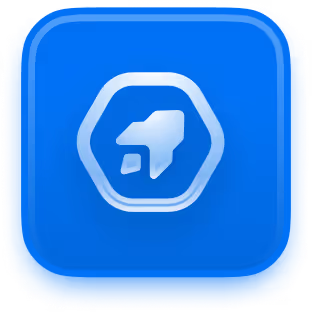In today's digital world, cold email software has become a go-to tool for businesses looking to reach potential customers and clients.
These software platforms provide the ability to send out bulk emails efficiently, targeting specific demographics and segments of your audience. However, merely sending out emails isn't enough to ensure success.
To truly maximize your return on investment (ROI) with cold email software, you need to implement effective analytics strategies. In this article, we'll explore some key strategies to help you get the most out of your cold email campaigns.
Understanding Your Audience
Before diving into analytics, it's crucial to have a solid understanding of your target audience. Who are they? What are their pain points and needs? What solutions can you offer them?
By understanding your audience, you can tailor your cold email campaigns to resonate with them, increasing the chances of engagement and conversions.

Customer Segmentation
Customer Segmentation is like sorting your audience into groups based on different things, like age, what they like, what they've bought before, and how they've interacted with your emails. By using analytics, you can figure out who fits into which group.
For example, you might have one group of young adults who are interested in technology, and another group of older adults who are interested in gardening. This helps you send emails that are just right for each group, instead of sending the same thing to everyone.
Once you've sorted your audience into these groups, you can then create emails that are personalized for each group. So, instead of sending a generic email to everyone, you can send one that talks directly to the interests and needs of each group.
For example, you might send a tech-savvy group an email about your latest gadgets, while you send the gardening group an email about your new range of plants.
This makes your emails more relevant and interesting to the people receiving them, which can lead to higher engagement and better results.
You can use Success.ai’s lead finder tool to detect the right people, as it will make sure the people you're contacting are genuinely interested and responsive, so you can put your energy into making your emails better, knowing that you're connecting with the right audience.
Buyer Persona Analysis
Creating buyer personas means making detailed profiles of the people you want to reach with your emails. Think about who they are, what they like, what problems they have, and what they want to achieve.
By looking at data from your email software, you can see what kinds of people are most interested in your emails. This helps you write emails that are just right for them, talking about things they care about and need help with.
Once you have these personas, you'll know exactly who you're talking to with each email. This makes it easier to write emails that feel personal and relevant to each person.
Instead of sending generic messages to everyone, you can speak directly to the interests and needs of each persona. This makes your emails more likely to catch their attention and get a response.

Behavioral Analysis
Analyzing the behavior of your audience can give you really helpful clues about what they like and what they do.
Keep an eye on things like how often people open your emails, how many times they click on links inside, and how many actually do what you want, like buy something or sign up for stuff.
This helps you understand which kinds of emails are most interesting to your audience. Then you can make your emails even better based on what works best.
By looking at these numbers, you can make your emails better so that more people do what you want them to. If you see that people are opening your emails a lot but not clicking on anything, maybe you need to make your links more noticeable.
Or if they're clicking but not buying, maybe you need to tweak your sales pitch. It's like fine-tuning your music playlist to get the perfect mix that everyone enjoys.
Feedback Loops
Feedback loops are like listening to what your audience has to say about your emails. They help you understand if your emails are hitting the mark or missing it.
To set up a feedback loop, you can add things like surveys or feedback forms to your emails. These let your recipients share their thoughts directly with you. Then, you can look at this feedback and see what you're doing well and what you can do better.
Once you've gathered feedback, it's time to make some changes. Maybe your audience loves your email content but thinks your subject lines could be catchier.
Or perhaps they find your emails too long and want them to be shorter. By analyzing the feedback, you can pinpoint areas where you can improve.
Optimizing Email Content
The content of your cold emails plays a significant role in their effectiveness. Analyzing and optimizing your email content can lead to higher open rates, CTRs, and ultimately, conversions.

A/B Testing
A/B testing, or split testing, is like trying out two different versions of an email to see which one works best. You can change things like the subject line, the words in the email, the buttons people click on, or even the pictures.
Then, you look at the results to see which version makes more people interested and doing what you want, like clicking on a link or buying something.
For example, you might send one email with a subject line saying "Get 20% off today!" and another with "Last chance to save money!"
Then, you see which one makes more people open the email and use the discount. This way, you can learn what words or phrases make people more likely to take action.
Personalization
Personalized emails are super important because they get more people interested and buying stuff than regular emails.
With analytics, you can make your emails personal by using info about the person you're sending them to, like their name or where they live, or what they've done before with your emails.
You can also use something called dynamic content, which means changing the email based on who's getting it. This way, you're sending messages that really matter to them.
When people see their name or something they care about in an email, they're more likely to read it and even buy something. Plus, when you send emails that feel like they're just for that person, they feel more connected to your brand.
So, by making your emails personal, you're not just sending messages; you're building relationships with your customers, which can lead to more sales and happier customers.

By using our AI email writer tool you can take your personalization game to the next level, making sure every email feels like it's made just for the people you're sending it to.
Timing and Frequency
Timing and frequency matter a lot when it comes to sending emails that work. You want to send emails when your audience is most likely to read and click on them. Analytics can help you figure out these best times.
Also, you need to think about how often you send emails. Sending too many can annoy people, but sending too few might make them forget about you.
So, it's important to find the right balance that keeps your audience interested without bombarding them with emails.
Tracking and Measuring Success
Tracking the performance of your cold email campaigns is crucial for understanding what's working and what's not.

By measuring key metrics and analyzing the data, you can make data-driven decisions to improve your ROI.
Key Performance Indicators (KPIs)
Identify the key metrics that show how well your email campaigns are doing. These metrics include open rates, click-through rates (CTRs), conversion rates, and return on investment (ROI).
Keep an eye on these KPIs all the time to see how your campaigns are doing and where you can make them better.
Regularly tracking these KPIs helps you understand if your emails are working like you want them to. Open rates tell you how many people are opening your emails. CTRs show how many people are clicking on the links inside your emails.

Conversion rates tell you how many people are doing what you want them to after opening your emails, like buying something or signing up. And ROI helps you see if your email campaigns are making you money.
By watching these numbers, you can figure out what's working well and what needs to change in your emails to get even better results.
Conversion Tracking
Conversion tracking is like keeping track of what happens after someone opens your email. It helps you see if your email actually made people do something, like buying your product, signing up for an event, or getting a resource you offer.
By setting up conversion tracking, you can see if your emails are doing what you want them to do.
For example, if you send out an email with a link to your online store, conversion tracking lets you know how many people clicked that link and actually bought something. This helps you figure out if your emails are bringing in customers and making sales.
Similarly, if you send an email inviting people to a webinar, conversion tracking tells you how many people signed up for it after getting your email. It's like having a report card for your email campaigns, showing you what's working and what needs improvement.
ROI Analysis
Ultimately, the goal of any marketing effort is to generate a positive ROI. This means you want to make more money from your campaigns than you spend on them. To figure out if your cold email campaigns are doing this, you need to do a little math.
First, look at how much money you're spending on your campaigns—this includes things like the cost of the email software and the time your team spends creating and sending emails. Then, look at how much money your campaigns are making you.
This could be from sales, sign-ups, or any other actions people take after getting your emails. When you subtract what you spent from what you made, you get your ROI. If it's a positive number, that means your campaigns are making you more money than they cost.
.png)
If it's negative, it means you're spending more money than you're making, and you might need to change your strategies.
Conclusion
Effective analytics strategies are essential for maximizing the ROI of your cold email campaigns.
By understanding your audience, optimizing your email content, and tracking your campaign performance, you can continuously improve your results and achieve greater success with your cold email software.
Remember to use analytics as a tool to guide your decision-making and iterate on your strategies for continuous improvement. With the right approach, cold email software can be a powerful tool for reaching and converting your target audience.
Utilize our Success.ai tools to make sure lots of people open and read your emails and to take your cold email software to the next level.


Try Success.ai No credit card required
Unlock unlimited access to 700M+ B2B leads, with unlimited email sending & warm-up. Supercharge your growth now with Success.ai!
















.avif)


.avif)





.avif)






.avif)














.jpg)

-min.jpg)








.avif)
.svg)
.avif)

